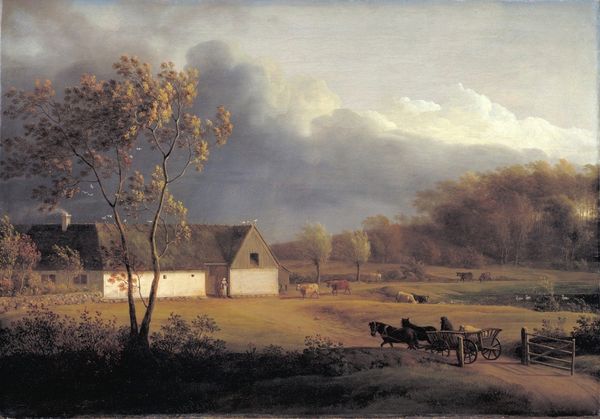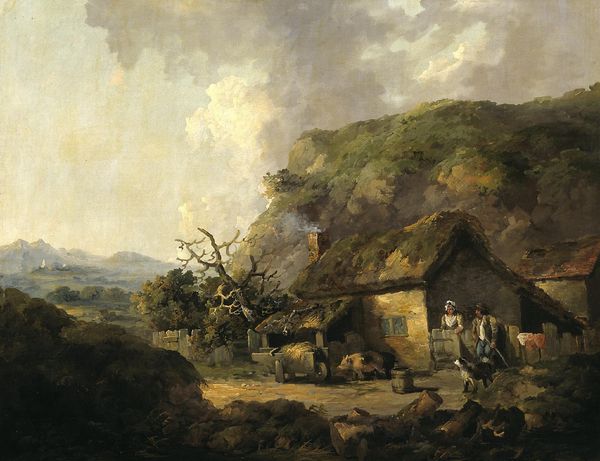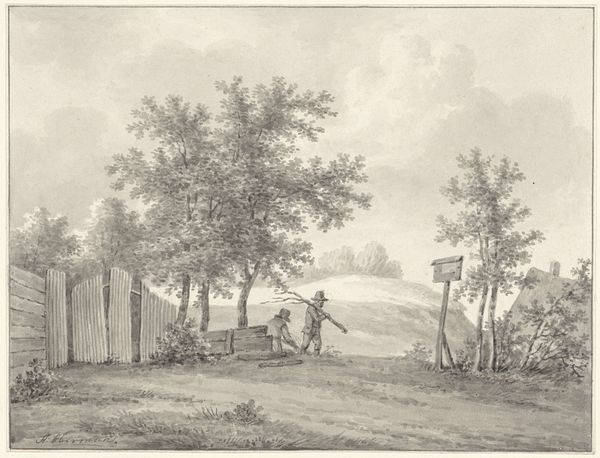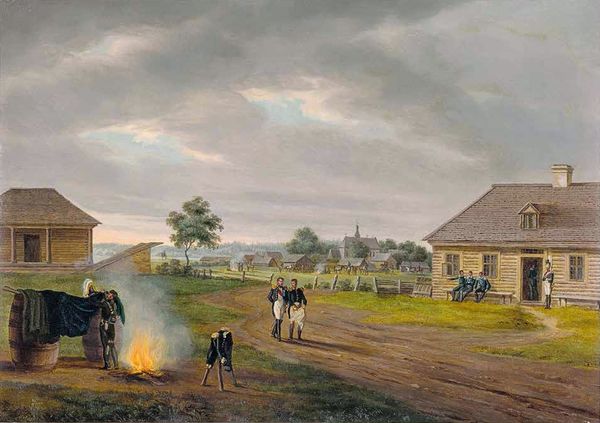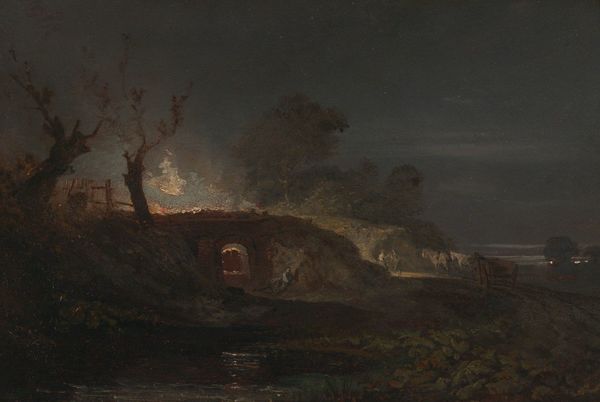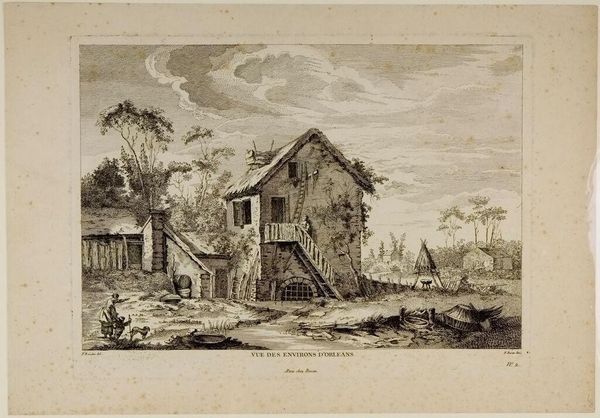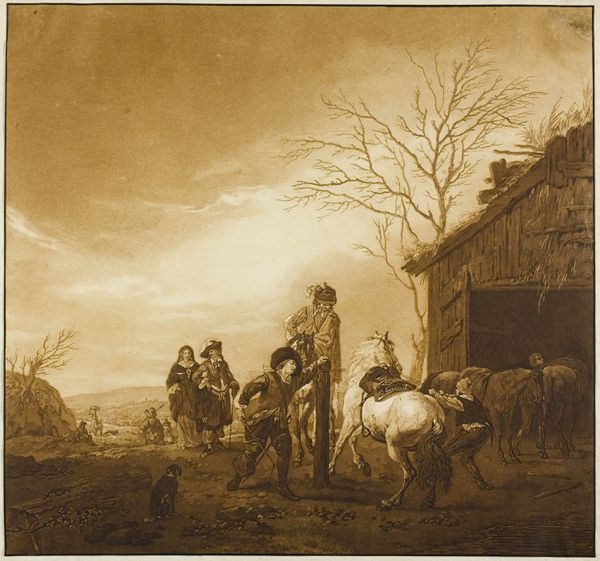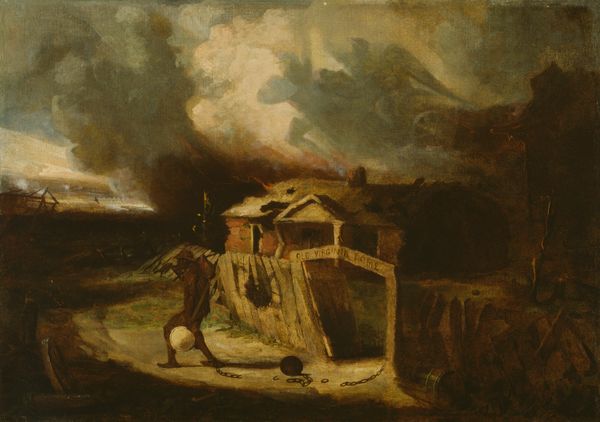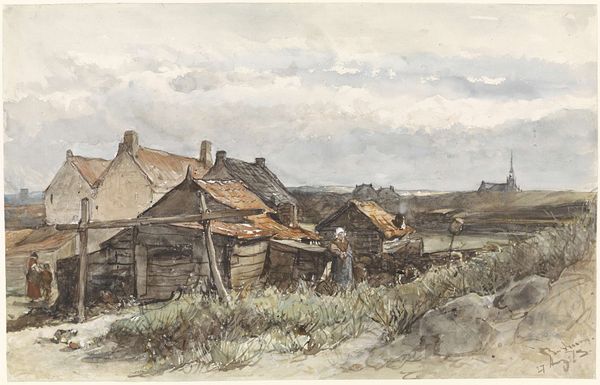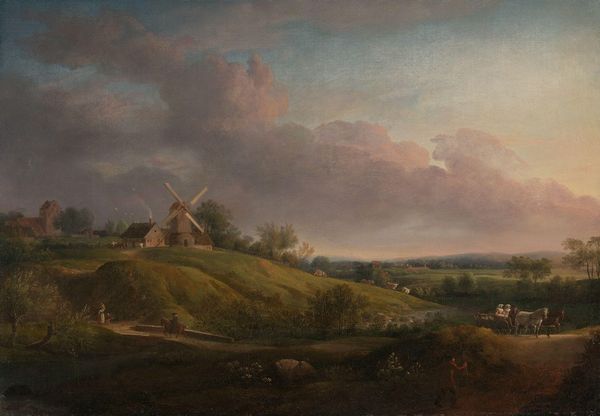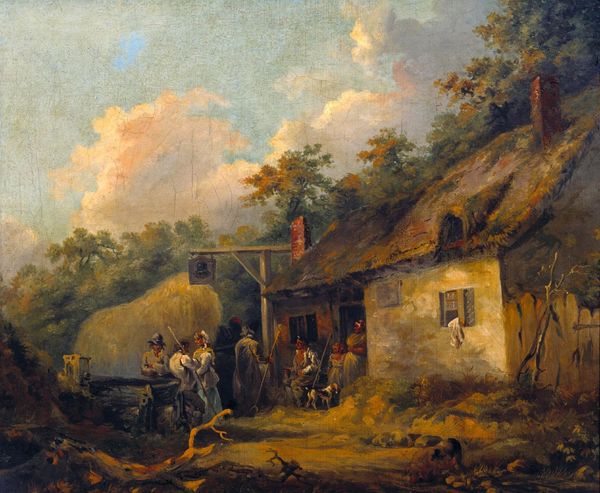
painting, watercolor
#
sky
#
rural-area
#
painting
#
atmospheric-phenomenon
#
sculpture
#
landscape
#
house
#
figuration
#
watercolor
#
romanticism
#
cloud
#
men
#
genre-painting
#
watercolor
Copyright: Public domain
Curator: Albrecht Adam painted this watercolor, entitled "Salečniki Vialikija. Headquarters," in 1812. Editor: It’s hauntingly beautiful. That moon, barely a sliver in the sky, casting this strange, blue light... It feels lonely. Curator: It depicts a scene during Napoleon's Russian campaign. Adam, who himself was part of the campaign, captured these quiet, almost unsettling moments of military life. The title alludes to a specific place. Editor: Headquarters doesn’t seem very headquarters-y. More like…makeshift. Are those soldiers just…sleeping outside? Curator: Indeed. Accommodation wasn’t always assured during military campaigns. The painting serves as documentation, but it also offers insight into the psychological landscape of war. The headquarters are just rural accommodations for the army. The vulnerability of the exposed figures underscores the uncertainty of the era. Editor: That fire...it's the heart of the painting, isn’t it? Both comfort and a beacon. Like a tiny rebellion against the overwhelming darkness. And the artist chose watercolor - that hazy, dreamlike medium feels perfect. Curator: Watercolour was often used for military documentation for its ease of transport and quick drying time in the field. Also its delicate and somewhat faded appearance contributes to the sense of melancholy of a night scene, as well as to the historical image that has faded through time. Adam was, of course, part of the academy as a court painter for a royal bavarian house. So the documentary depiction also needed to achieve a certain aesthetic of that time. Editor: And that single soldier standing guard… a dark sentinel by the fire. The sky rumbles with heavy clouds. It’s masterful, capturing a quiet anticipation of…well, something. Curator: The piece underscores how war impacts not only geopolitical structures but intimate, personal spaces, such as shelter, rest, and how genre-based paintings reflect political conditions in culture and society. Editor: It's funny, I came in thinking landscape, but I'm leaving with a feeling of intimate portraiture. I suppose a place becomes a portrait of its inhabitants in the end, even when they are invaders or conquerers. Curator: An interesting thought to ponder as we exit, noting how war reimagines human geographies, even in something as fragile as a watercolour.
Comments
No comments
Be the first to comment and join the conversation on the ultimate creative platform.
